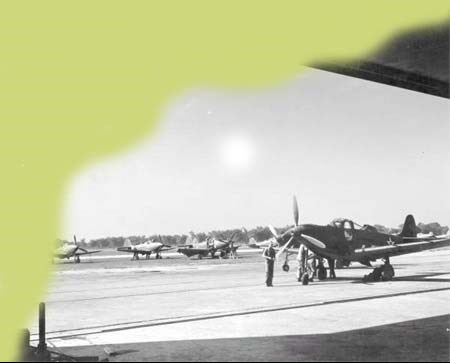Military Training in Florida: Aviation
The most dramatic example of an increased military presence in Florida during World War II was the large number of Army Air Fields and Naval Air Stations that were established in the state. Florida's climate, which allowed for year-round training, certainly contributed to its popularity. Perhaps more Navy and Army Air Force pilots and air crews were trained in Florida than in any other state, and many pilots from Allied nations also received instruction. Unfortunately, hundreds of student pilots lost their lives in training accidents. So many crashes occurred at airfields in the Tampa Bay area that a common expression among the flyers was "One a Day in Tampa Bay."
Established in 1914, the Naval Air Station Pensacola had long been considered the "Cradle of Naval Aviation." During World War II, some 28,000 naval aviators received training at Pensacola and its auxiliary fields. In the 1930s the Army began building a modest facility in the Florida panhandle that would evolve into Eglin Army Air Field, one of the largest installations of its kind. Eglin Field served as an aircraft armament proving ground and a research and development facility during World War II. In 1942, Army Air Force Lieutenant Colonel Jimmy Doolittle trained his pilots at Eglin for their dramatic bombing raid on Japan's capital, Tokyo.
Established in 1940, Jacksonville Naval Air Station became one of the three largest air stations in the world by the end of the war, with a complement of 1,000 planes. Orlando Army Air Field was established in late 1940, initially as a base to train American pilots in enemy technology and tactics. Later in the war, B-29 Superfortress bomber crews were training at the facility. An Officer's Candidate School in Miami turned out thousands of "Ninety-Day Wonders" the nickname for men who received commissions in the Army Air Force after only three months of training. Homestead Army Air Field was established in 1942 as a departure point for aircraft being shipped overseas and as a facility to train transport crews.

 Bell P-39 Airacobra aircraft on the flight line at Ft. Myers
Bell P-39 Airacobra aircraft on the flight line at Ft. Myers(Florida State Archives)


